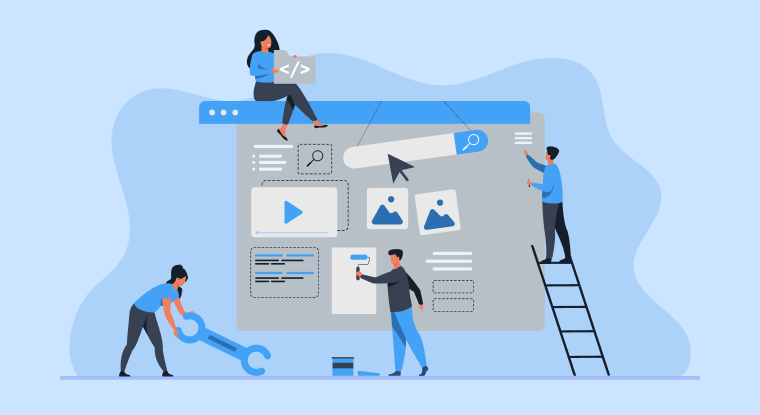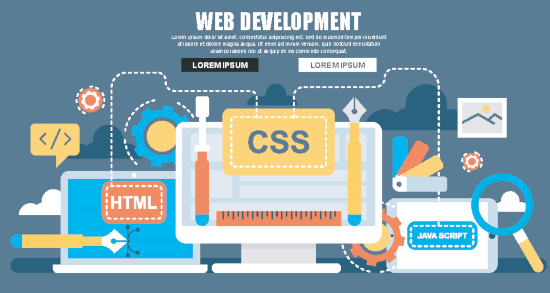User Experience (UX) refers to the overall experience a user has while interacting with a website or web application. It encompasses usability, accessibility, and pleasure derived from the interaction. In today’s digital landscape, where competition is fierce, the significance of UX in web development cannot be overstated. This article explores the core principles of UX design, its benefits, and best practices for creating exceptional user experiences.
What is User Experience (UX)?
UX involves a deep understanding of user needs, behaviors, and pain points. It is not just about how a website looks; it’s about how it works and how users feel while using it. UX design aims to create products that provide meaningful and relevant experiences, focusing on enhancing user satisfaction.
Core Principles of UX Design
- User-Centric Design: The foundation of good UX design is understanding the target audience. Conducting user research through surveys, interviews, and usability testing helps gather insights into user needs and preferences.
- Usability: Usability refers to how easily users can navigate and interact with a website. Key aspects of usability include intuitive navigation, clear content hierarchy, and simple interaction patterns.
- Accessibility: Ensuring that websites are accessible to all users, including those with disabilities, is crucial. Implementing accessibility best practices, such as using alt text for images and ensuring keyboard navigability, enhances inclusivity.
- Consistency: Consistency in design elements—such as buttons, colors, and fonts—creates familiarity and helps users understand how to interact with a website. A cohesive design language fosters trust and confidence.
- Feedback: Providing users with feedback during interactions, such as loading indicators or confirmation messages, helps them understand the results of their actions. This builds a sense of control and reduces uncertainty.
Benefits of Prioritizing UX in Web Development
- Increased User Satisfaction: A well-designed user experience leads to higher satisfaction levels, encouraging users to spend more time on the site and return in the future.
- Higher Conversion Rates: By simplifying navigation and streamlining the user journey, effective UX design can increase conversion rates, whether that means signing up for a newsletter, making a purchase, or completing a form.
- Reduced Bounce Rates: When users find a website easy to navigate and visually appealing, they are less likely to leave immediately. Good UX keeps users engaged and encourages them to explore more content.
- Enhanced Brand Loyalty: A positive user experience fosters trust and loyalty. Users are more likely to return to a website that offers a seamless and enjoyable experience, ultimately strengthening brand relationships.
- SEO Benefits: Search engines like Google consider user experience as a ranking factor. Websites that provide a positive experience are more likely to rank higher in search results, leading to increased visibility and traffic.
Best Practices for Creating Exceptional UX
- Conduct User Research: Gather insights into your target audience through surveys, interviews, and usability tests. Understanding their needs and pain points is key to effective UX design.
- Create User Personas: Develop user personas based on research findings. These fictional representations of your target audience help guide design decisions and ensure a user-centered approach.
- Develop Wireframes and Prototypes: Wireframes and prototypes allow designers to visualize the layout and functionality of a website before development begins. This iterative process helps identify potential usability issues early on.
- Implement Responsive Design: Ensure that your website provides a seamless experience across devices by adopting responsive design principles. This enhances usability for users on mobile phones, tablets, and desktops.
- Conduct Usability Testing: Regularly test your website with real users to identify pain points and gather feedback. Usability testing helps ensure that design changes effectively address user needs.
- Optimize Page Load Times: Fast-loading pages are essential for a positive user experience. Optimize images, leverage browser caching, and minimize HTTP requests to improve performance.
- Prioritize Content Clarity: Ensure that content is easy to read and understand. Use clear headings, bullet points, and concise language to enhance readability.
- Monitor Analytics: Use analytics tools to track user behavior on your website. Analyze metrics such as bounce rates, time on page, and conversion rates to identify areas for improvement.
Conclusion
User Experience (UX) is a critical aspect of web development that significantly impacts user satisfaction, engagement, and conversion rates. By prioritizing UX principles, conducting user research, and implementing best practices, developers can create websites that not only look good but also provide meaningful and enjoyable experiences. As the digital landscape continues to evolve, investing in UX design will be essential for staying competitive and meeting user expectations.



